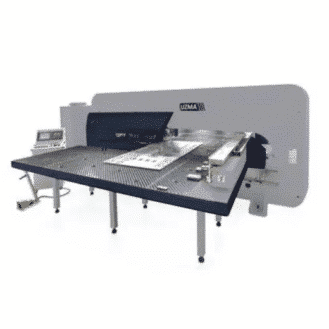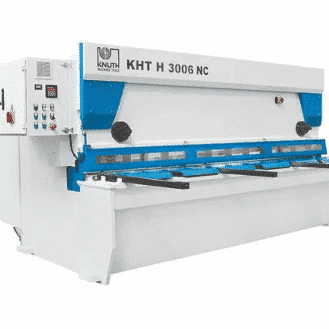There are many different types of stitches, but as previously mentioned, industrial sewing machines can usually only perform one type of stitch.
The American Society for Testing and Materials (ASTM) and the International Organization for Standardization (ISO) have each created a stitch classification system. These are ASTM D 6193 and ISO 4915:1991.
Since there is a wide variety of stitches, in this guide we will concentrate on the five most commonly used.

Types of stitches
Lockstitch
Often referred to as “straight stitch”, this is the most frequently used stitch in the industry. This is a single-needle stitch created by two threads that intertwine when the threaded needle pierces through the cloth and enters the bobbin area. To make this stitch, you need to use a flat bed seamer.
Applications:
Clothing
Synthetic lifting slings
Large tarpaulins and fabrics
Advantages:
– It’s the quickest stitch to make.
– It’s also the cheapest.
Disadvantages:
– The stitches can be very tight, so this type of stitch is not suitable for stretch fabrics.
Overlock stitch
This stitch is produced by a sewing machine called a serger, which can sew at ultra-fast speeds.
Applications:
Stretchy clothing (sportswear, dancewear)
Advantages:
– The overlock stitch is very flexible and strong.
– Sergers sew faster than other sewing machines (7,000 rpm).
Disadvantages:
– High thread consumption
Chain stitch
This stitch resembles a chain or rope. It produces particularly decorative effects and is often used for sewing accessories on fabrics.
Applications:
Clothing
Paper and plastic bags
Large tarpaulins and fabrics
Advantages:
– It is larger than other stitch types, so it’s ideal for filling in patterns.
Disadvantages:
– High thread consumption
– Not as strong as other stitch types
– Takes longer to sew
Double chain stitch
This type of stitch resembles the standard chain stitch, but it is stronger.
Applications:
Elastics
Belts
Jackets
Advantages:
– It is very strong and more durable than the standard chain stitch.
– It has a high stretch capacity, which can be useful for sewing elastics.
Disadvantages:
– High thread consumption
– Takes longer to sew
– Easily unravels if a thread is damaged, which often forces garment manufacturers to sew over existing stitches or use glue to reinforce seams.
Zigzag stitch
As its name suggests, the zigzag stitch has a sinuous, curved shape. Industrial sewing machines specializing in zigzag stitches allow you to adjust the stitch width and length.
Applications:
Sails
Stretch fabrics
Advantages:
– This stitch tightens fabrics.
– It makes sewing stretch fabrics easier.
Disadvantages:
– The thread tension needs to be properly adjusted.
– This stitch is not suitable for thin fabrics.







